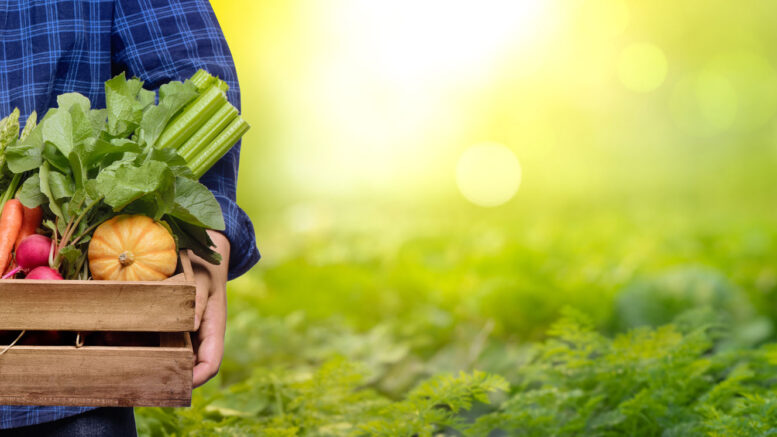U.S. sales of certified organic products approached $70 billion in 2023, a new record for the sector, the Organic Trade Association (OTA), Washington, D.C., reported. Dollar sales for the American organic marketplace hit $69.7 billion last year, up 3.4%, according to OTA’s 2024 Organic Industry Survey.
Produce held its spot as the largest organic category in 2023, continuing to be the primary entry point for consumers into the organic market.
Despite stubborn price inflation seen throughout retail aisles, consumers remained clear-eyed about their priorities in the products they chose for themselves and their families, valuing health and sustainability and seeking out the USDA Organic label, OTA said. The organic marketplace recalibrated its supply chain and reconciled the cost of doing business in part with increased retail pricing. The industry continued to grow, with organic food sales in 2023 totaling $63.8 billion and sales of organic non-food products totaling $5.9 billion.
“It is encouraging to see that organic is growing at basically the same rate as the total market,” said Tom Chapman, co-CEO of OTA. “In the face of inflation and considering organic is already seen as a premium category, the current growth shows that consumers continue to choose organic amidst economic challenges and price increases. Although organic is now a maturing sector in the marketplace, we still have plenty of room to grow,”
In 2023, the increase in dollar sales in the organic market was driven more by pricing than unit sales, OTA said. However, consumers boosted their purchases of many organic products. Increases in unit sales were reported for up to 40% of the products tracked in this year’s survey. The survey also showed that prices for many non-organic products climbed at a faster rate than organic products. This means the price gap between conventional and organic is closing, which should help fuel growth for organic products in 2024.
OTA said produce held its spot as the largest organic category in 2023 because organic produce meets the consumer’s desire for clean, healthy food.
“The importance of organic’s critical benefit of no toxic synthetic pesticides is easy to grasp when buying organic berries or carrots,” OTA said. “In 2023, the category grew by 2.6% to $20.5 billion. Organic produce now accounts for more than 15% of total U.S. fruit and vegetable sales. Top sellers in the organic produce section were avocados, berries, apples, carrots and packaged salads—and organic bananas saw stronger growth in 2023 than non-organic bananas.”
The second biggest-selling food category in the organic aisles was the grocery category with sales of $15.4 billion, for a 4.1% growth. This new category represents many of the products previously grouped under breads and grains, condiments and packaged and prepared foods.
Organic labeled a stand-out
The number of “organic” claims and labels continued to expand in the retail aisles in 2023, but the organic seal remained a stand-out with consumers, OTA said. A growing consumer focus on personal and family health, sustainability and a desire for clean products free from antibiotics, hormones, preservatives and dyes kept shoppers turning to organic. More consumers are aware of the potential health benefits associated with organic foods and many consumers, especially the Gen Z generation, are increasingly conscious of the ethical implications of their food choices and are looking for products that align with their values, such as animal welfare, fair trade and support for organic farmers.
Research is showing a consistent and growing interest in organic from millennials and Gen Z. These generations grew up with organic and sustainability, and the health of people and the planet are top-of-mind for these consumers. Industry experts see this as an opportunity for organic, with the sector well positioned to meet the product attributes and values sought by consumers today and for future generations.
By 2030, the U.S. population will consist of a majority driven by millennial, Gen Z and younger generations.
But the future for organic is not without its challenges, OTA said. The latest term adding confusion to the marketplace is “regenerative.”
While regenerative labels are not necessarily top of mind for consumers yet, the attributes they claim to represent include soil health, animal and human welfare and biodiversity—attributes already embodied by the USDA Organic seal. As new certifications develop around regenerative agriculture, there is concern of consumer confusion, making it all the more important to elevate organic education, OTA said.
“It is essential to educate consumers that choosing organic is a straightforward way to tackle some of the greatest challenges we face,” said Matthew Dillon, co-CEO of OTA. “Whether it’s accessing healthy foods, improving transparency in supply chains, mitigating climate change, supporting rural economic resilience, protecting natural resources or realizing the multitude of other benefits, effectively communicating and delivering on these promises is the key to expanding organic’s share of our dinner plate.”
Follow us on social media:


Be the first to comment on "US organic product sales set record"